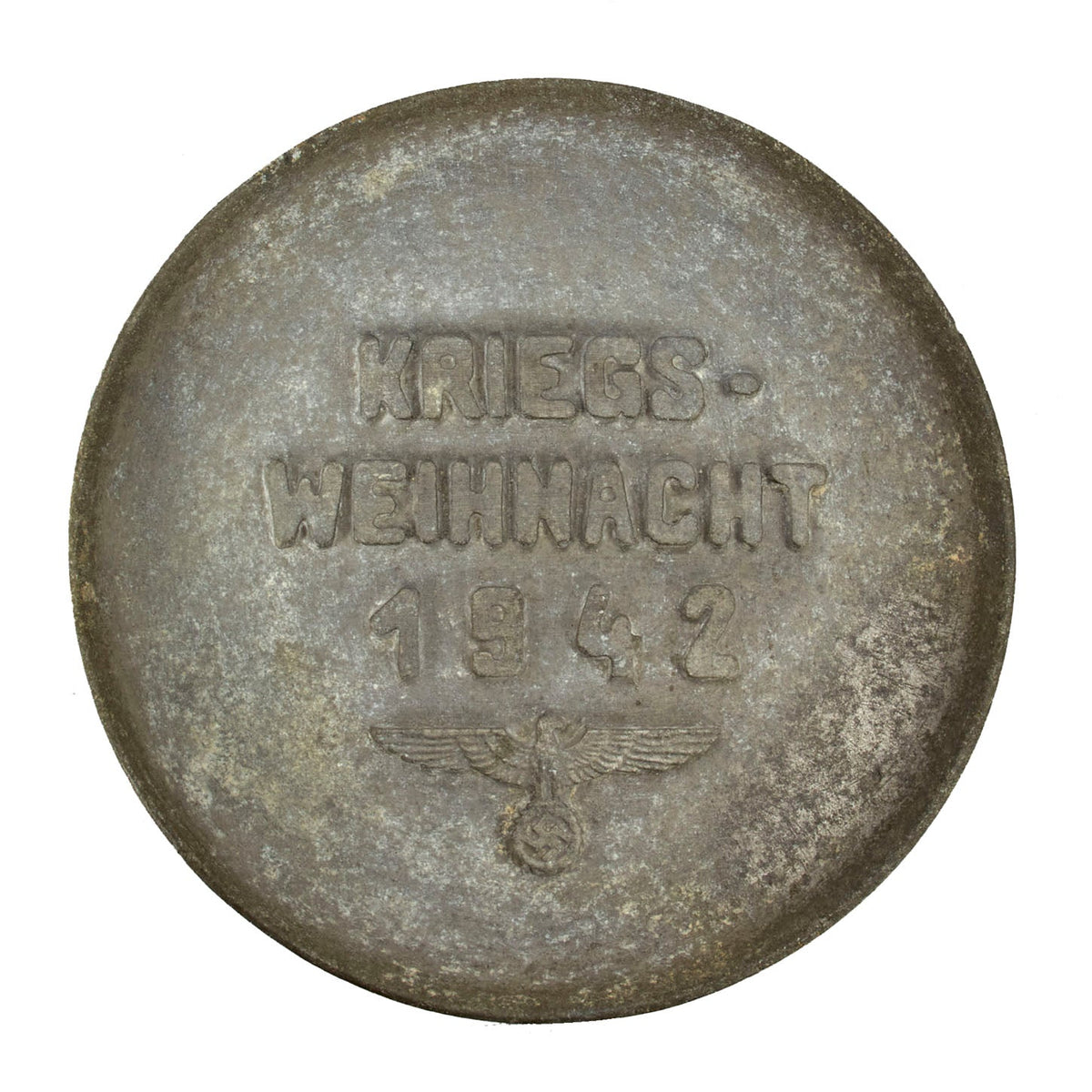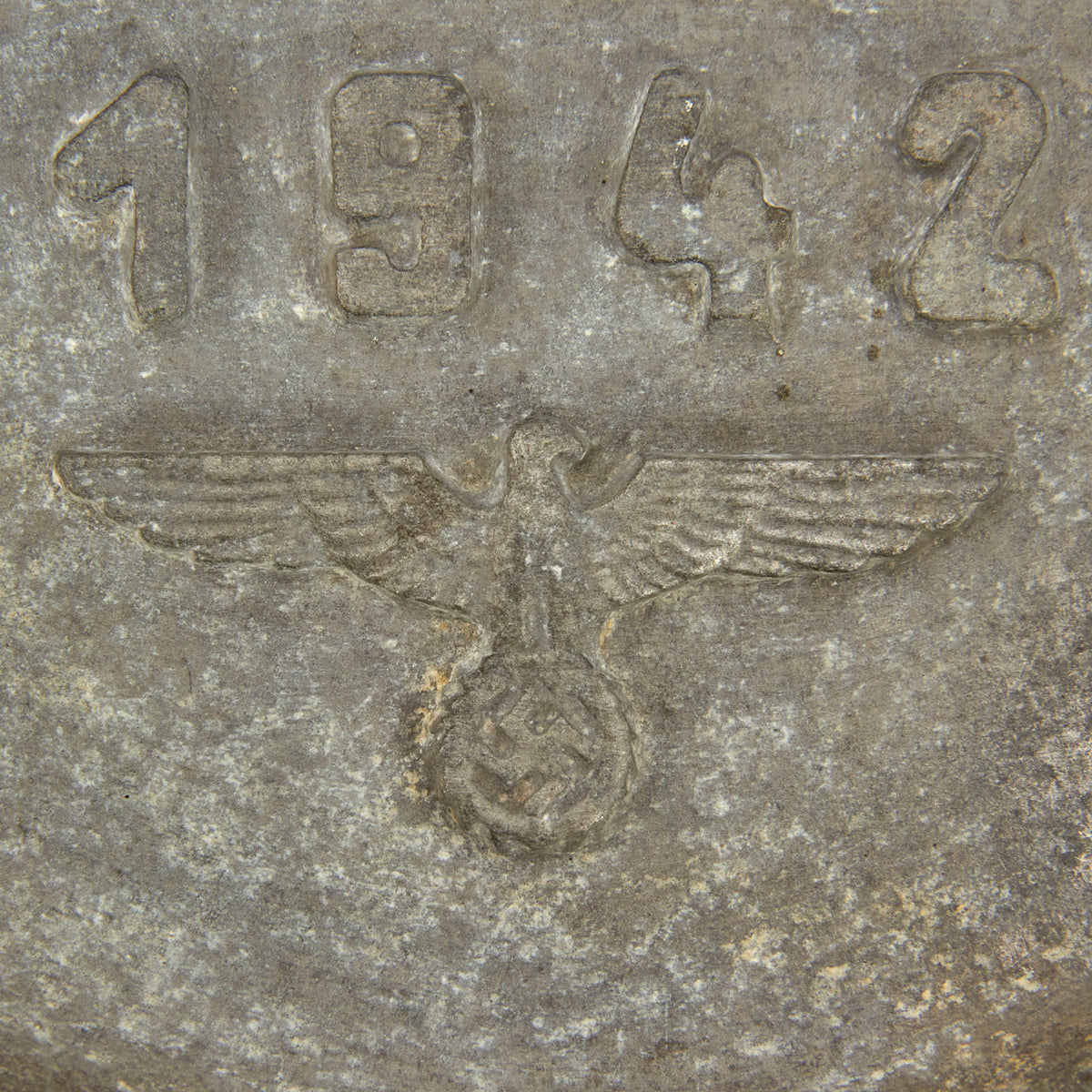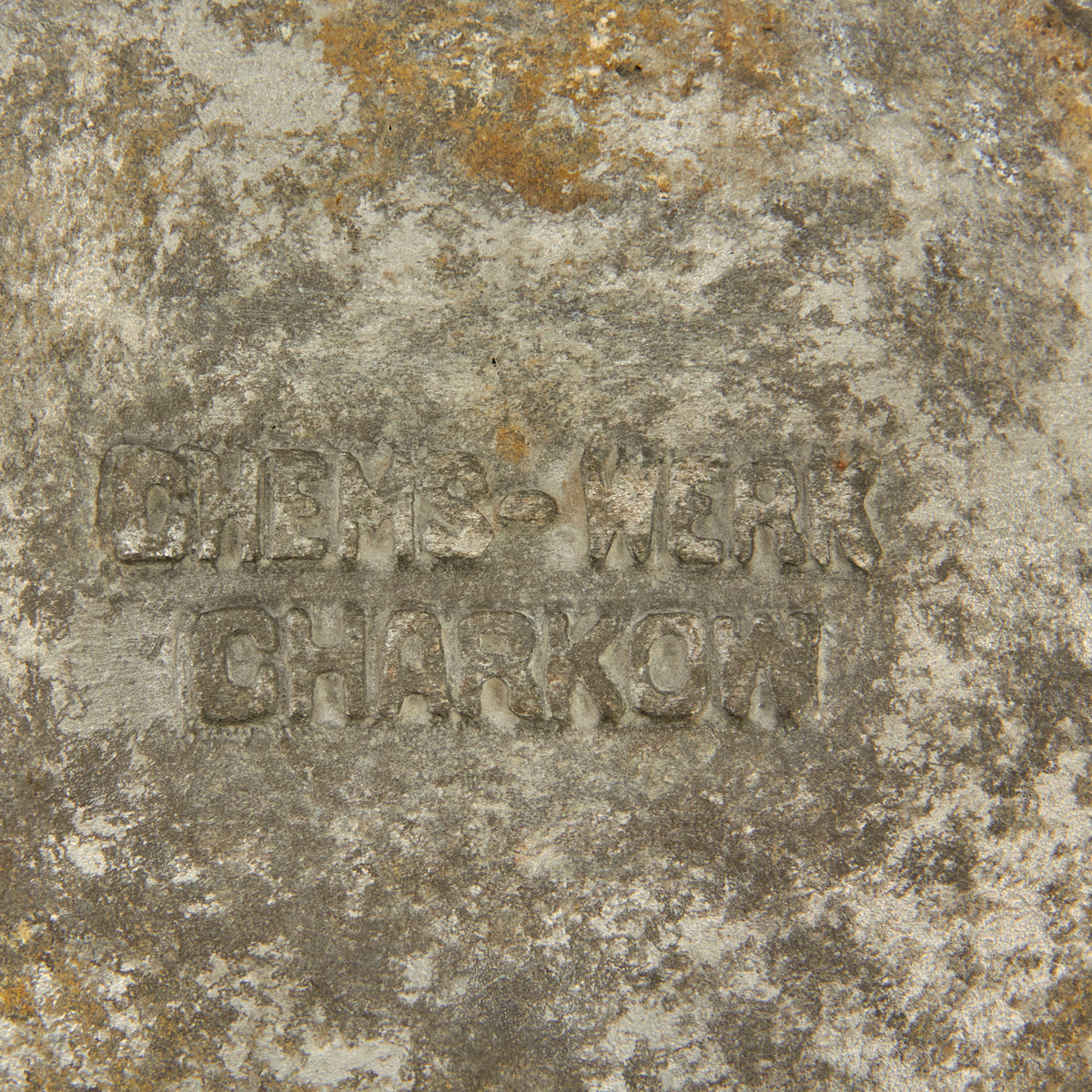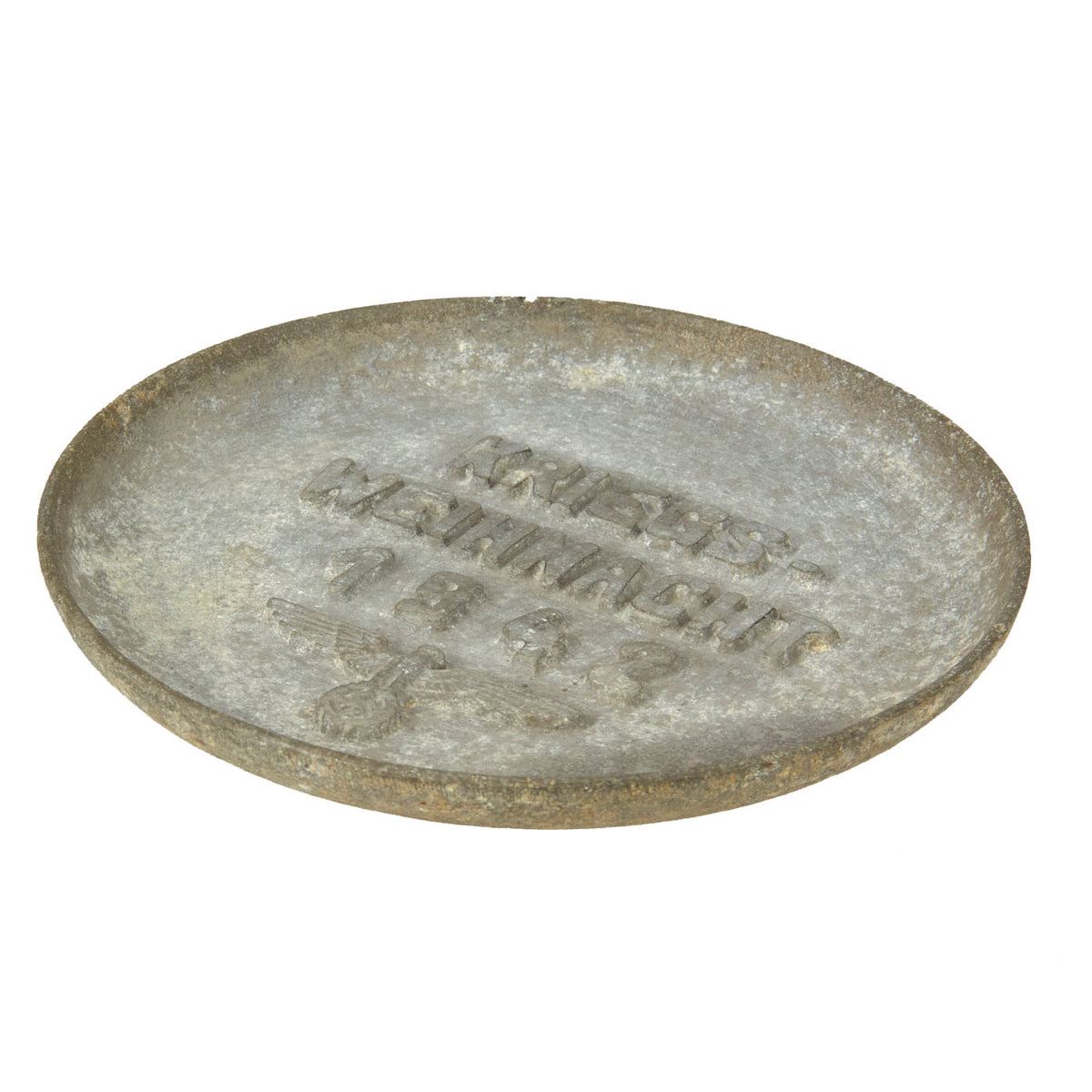Original German WWII Heer Army Kriegsweihnacht 1942 Aluminum Christmas Dish by Chems-Werk Original Items
$ 295,00 $ 118,00
Original Item: Only One Available. The first German Christmas of WWII was celebrated in December of 1939 while the front was for the most part silent; the Western Allies and Germany were in the midst of the war between the period after the Invasion of Poland in September of 1939, and the Invasion in Norway later in April of 1940.
In bunkers, trenches, pillboxes, depots, private homes and unit bases, all along the German border, and in occupied Poland, the German soldiers who were unfortunate enough to not be with family and loved ones, spent time together amongst their comrades and exchanged simple gifts of food, drink, laughed, played, and sang traditional German Christmas songs such as “O Tannenbaum” – a timeless song of Christmas. As the war progressed, becoming harsher, so did the conditions in which the German soldiers were living in. Christmas 1940 was also a relatively quiet period, the Western Allies, minus England, were now occupied by German troops and the Eastern Front had not yet erupted – that would come in June of 1941 with the Invasion of the Soviet Union. The winter of 1941 was one of the harshest and unforgiving winter seasons in recorded history.
Christmas 1942 was progressively worse for Germany, with the entire 6th Armee was lost in the Stalingrad Pocket shortly after the holiday season. Interestingly enough, at midnight on Christmas eve, the sky over Stalingrad was lit up by thousands of colorful flares fired by nearly every unit trapped in the pocket. This amazing sight was in celebration of the Christmas season, and it lasted for many minutes. In the face of increasing despair, Christmas was sometimes celebrated with the sort of true peace, understanding, and acceptance that only those on the brink could feel. The following excerpt is from a soldier trapped in Stalingrad on that fateful Christmas of 1942.
“During the past weeks, all of us have begun to think about the end of everything. The insignificance of everyday life pales against this, and we have never been more grateful for the Christmas Gospel than in these hours of hardship. Deep in one’s heart, one lives with the idea of Christmas, the meaning of Christmas. It is a feast of love, salvation, and pity on mankind. We have nothing else here but the thought of Christmas. It must and will tide us over grievous hours…However hard it may be, we shall do our utmost to master fate and try everything in our power to defeat the sub-humanity that is wildly attacking us. Nothing can shake our belief in victory, for we must win if Germany wants to live…”
This plate is a lovely reminder of the Christmas of 1942. It measures approximately 8 inches across and features KRIEGS-WEIHNACHT 1942 with the German Heer eagle beneath it. It appears to have been made of aluminum and was finished in a silver plating. Unfortunately almost all of the original plating is long worn away, but the message and eagle are still very easily recognizable. The reverse of the plate features makers information for CHEMS-WERK CHARKOW. We have not been able to determine if this is the maker’s information or location in which this plate originated from.
This is a lovely dish that comes ready to display!
Fast Shipping with Professional Packaging
Thanks to our longstanding association with UPS FedEx DHL, and other major international carriers, we are able to provide a range of shipping options. Our warehouse staff is expertly trained and will wrap your products according to our exact and precise specifications. Prior to shipping, your goods will be thoroughly examined and securely secured. We ship to thousands clients each day across multiple countries. This shows how we're dedicated to be the largest retailer on the internet. Warehouses and distribution centres can be located throughout Europe as well as the USA.
Note: Orders with more than one item will be assigned a processing date depending on the item.
Before shipping before shipping, we'll conduct a thorough inspection of the items you have ordered. Today, the majority of orders will be delivered within 48 hours. The delivery time will be between 3-7 days.
Returns
The stock is dynamic and we cannot completely manage it because multiple stakeholders are involved, including our factory and warehouse. So the actual stock may alter at any time. It's possible that you may not receive your order once the order has been made.
Our policy is valid for a period of 30 days. If you don't receive the product within 30 days, we are not able to issue a refund or an exchange.
You can only return an item if it is unused and in the same state as the day you received it. You must have the item in its original packaging.
Related products
Uncategorized
Uncategorized
Australian WWII Owen MK1 Machine Carbine SMG Custom Fabricated Replica with Sling Original Items
Uncategorized
Uncategorized
Uncategorized
Uncategorized
Uncategorized
Armoured Fighting Vehicles of the World: AFVs of World War One (Hardcover Book) New Made Items
Uncategorized
Uncategorized
Uncategorized
Uncategorized
Armored Burgonet Helmet & Polearm from Scottish Castle Leith Hall Circa 1700 Original Items
Uncategorized
Uncategorized
Angolan Rebel 1970s era 60mm Inert Display Mortar from Angolan Civil War Original Items
Uncategorized
Uncategorized
Uncategorized
Uncategorized
Band of Brothers ORIGINAL GERMAN WWII Le. F.H. 18 10.5cm ARTILLERY PIECE Original Items
Uncategorized
Uncategorized










































































